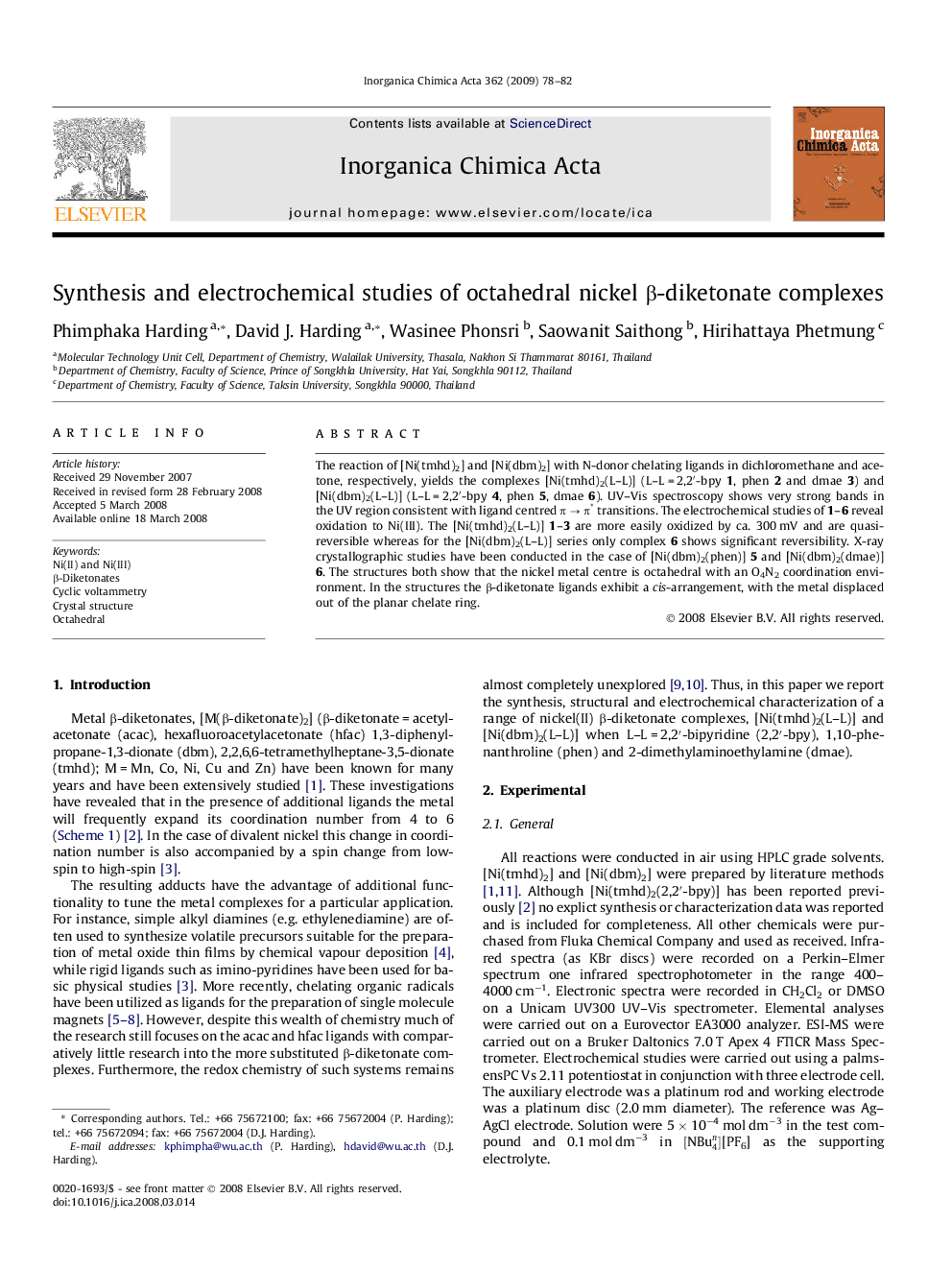| Article ID | Journal | Published Year | Pages | File Type |
|---|---|---|---|---|
| 1309994 | Inorganica Chimica Acta | 2009 | 5 Pages |
The reaction of [Ni(tmhd)2] and [Ni(dbm)2] with N-donor chelating ligands in dichloromethane and acetone, respectively, yields the complexes [Ni(tmhd)2(L–L)] (L–L = 2,2′-bpy 1, phen 2 and dmae 3) and [Ni(dbm)2(L–L)] (L–L = 2,2′-bpy 4, phen 5, dmae 6). UV–Vis spectroscopy shows very strong bands in the UV region consistent with ligand centred π → π∗ transitions. The electrochemical studies of 1–6 reveal oxidation to Ni(III). The [Ni(tmhd)2(L–L)] 1–3 are more easily oxidized by ca. 300 mV and are quasi-reversible whereas for the [Ni(dbm)2(L–L)] series only complex 6 shows significant reversibility. X-ray crystallographic studies have been conducted in the case of [Ni(dbm)2(phen)] 5 and [Ni(dbm)2(dmae)] 6. The structures both show that the nickel metal centre is octahedral with an O4N2 coordination environment. In the structures the β-diketonate ligands exhibit a cis-arrangement, with the metal displaced out of the planar chelate ring.
Graphical abstract[Ni(β-diketonate)2(L–L)] have been synthesized, the X-ray structural studies show an octahedral geometry and electrochemical studies reveal oxidation to Ni(III).Figure optionsDownload full-size imageDownload as PowerPoint slide
